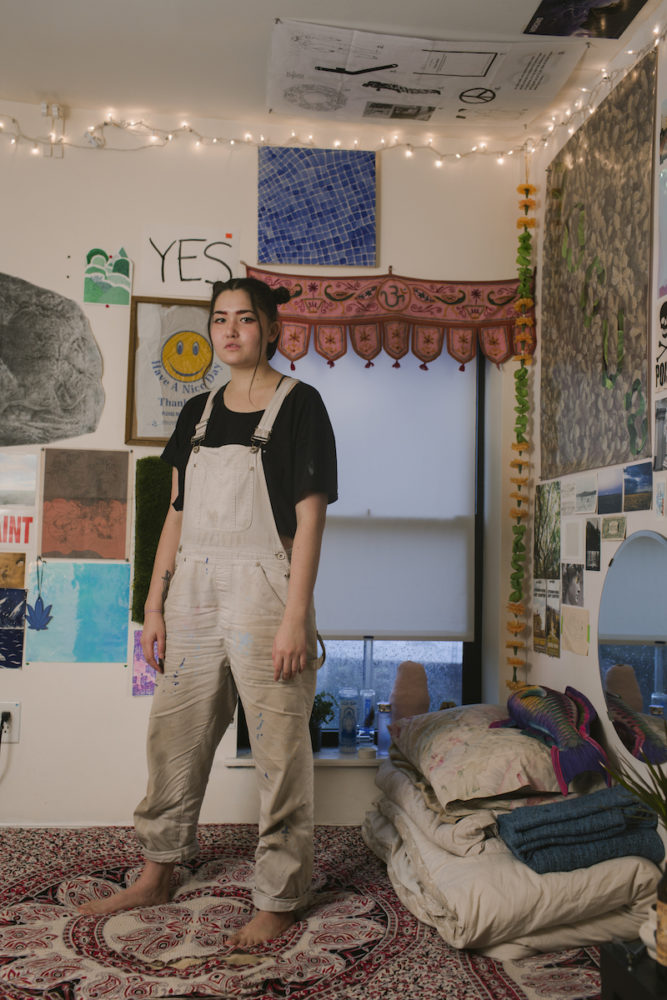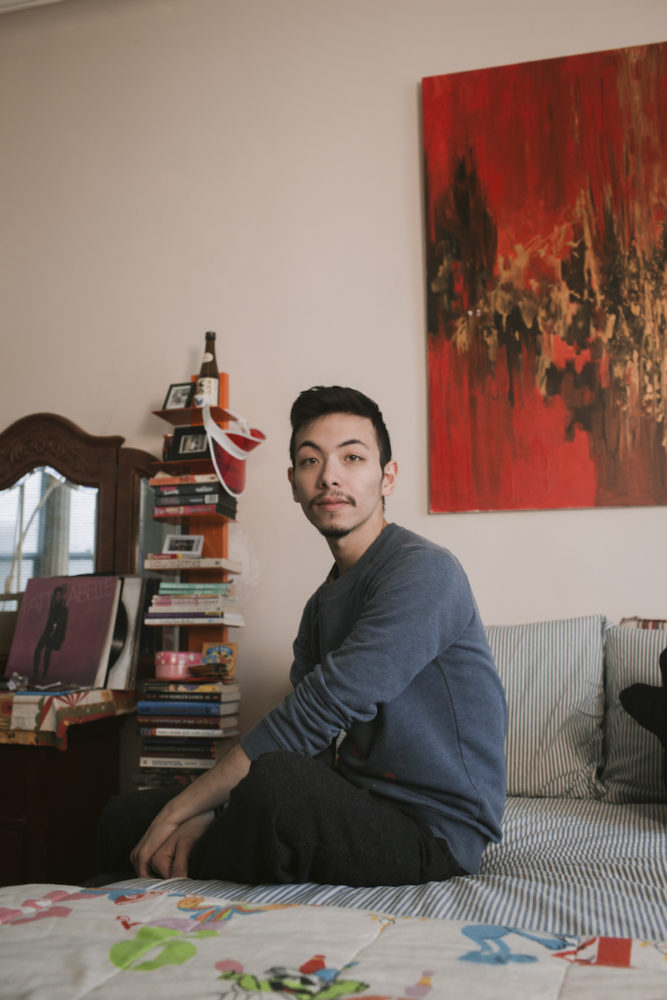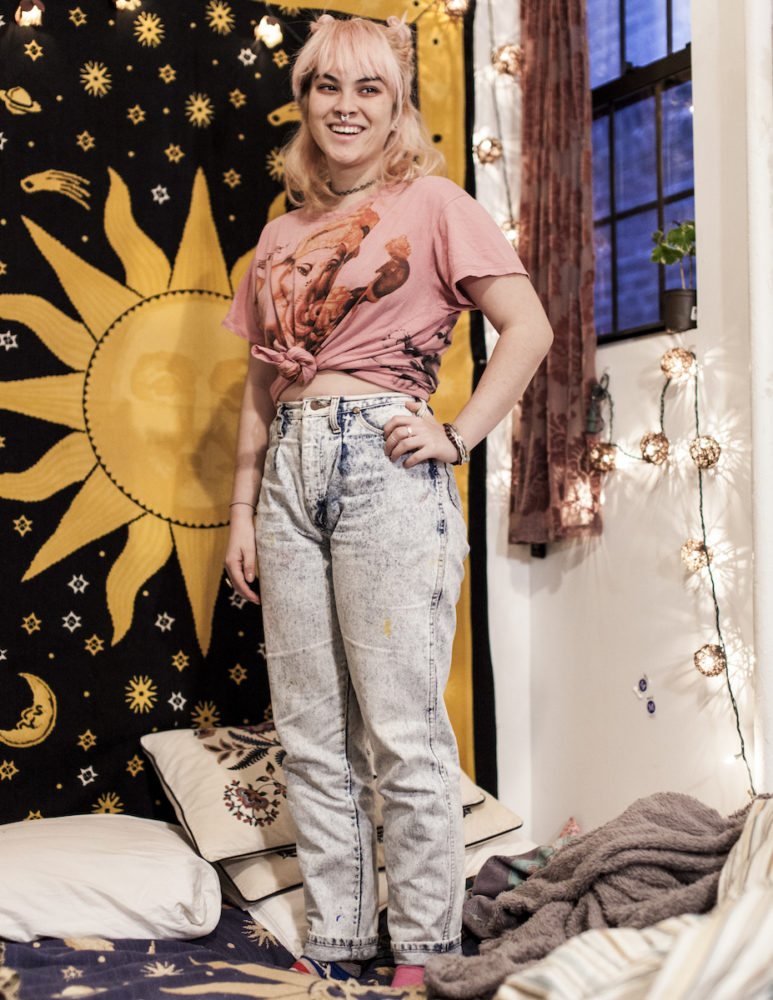The lived nikkei experience is difficult to define in the world, let alone in a single photograph. With her portraits, photographer Tori Toguchi aims to create space to explore multiple meanings.
They’re known as nikkeijin, emigrants of Japanese descent and their descendants who permanently live abroad. It’s a definition for the otherwise undefinable, for most nikkeijin resist neat classification. Collectively, their backgrounds and experiences are anything but uniform.
One nikkeijin could be Okinawan, Mexican, and Black. Another could be hāfu—someone who is half Japanese—born in Aomori to a Japanese mother and white American father but resettled in the United States. Another might have a Dutch mother and a Japanese father yet have lived as a British citizen in London her whole life. All are nikkeijin, or nikkei, a popular abbreviation of the term, and all are subjects of Nikkeijin 日系人, a portrait series by photographer Tori Toguchi.


Born and raised in Honolulu, Hawai‘i, Toguchi is ethnically Japanese and Okinawan. In other words, nikkeijin. Her mother’s family came from Okinawa to Hawai‘i, starting with Toguchi’s great-great-grandfather in the early 1900s, and her father’s family hails from Japan. Her interest in nikkeijin began in 2014, the same year that she moved to New York City to pursue photography at the School of Visual Arts.
Suddenly unmoored from her community in Hawai‘i, where a majority of residents are of solely Asian descent or multiracial, Toguchi began to question her identity, heritage, and ethnicity. She started talking to people about their sense of belonging or disconnection from being nikkeijin. She spoke with friends, acquaintances, schoolmates, even strangers who were tagged #nikkei or #hāfu on Tumblr.
“A few of the people I met would talk about being mixed race, not being monoracial, feeling discriminated against and left out of the communities they grew up around or in,” she says. Hearing others’ thoughts on belonging or lack thereof was the push that made her pursue the project.




Nikkeijin 日系人 shows nine young adults alone in their bedrooms. Her subjects are a mix of friends, acquaintances, and nikkei she met on Tumblr or social media. Almost everyone is seated on their beds, their belongings framing them. The bedroom setting was deliberate. “I chose to portray them in their rooms because, apart from ethnic or physical identity, a room represents personality in a way that I can photograph,” Toguchi says.
At first glance, little seems to unite the photographs aside from the domestic spaces. Although everyone is nikkeijin, none of them could be accused of that all-too-familiar stereotype: Asians all look the same. But the longer your eyes linger over each image, the more similarities start to emerge: Each person shares a quiet confidence, an absence of pretense. They look like people settled in their skin, willing to be seen.
“A few of the people I met would talk about being mixed race, not being monoracial, feeling discriminated against and left out of the communities they grew up around or in,” Toguchi says.
Toguchi allowed each of her subjects to pick their favorite image of themselves, which might explain their comfort in front of the camera. Accompanying the series are a few candid video interviews in which Toguchi asked her subjects specific questions about their identities. Wataru Yonaiyama, one of the series’ subjects, also drew a small self-portrait and wrote some thoughts in Japanese and English.
His words read: “I am from Aomori. I am hafu, I am proud.” In the future, Toguchi wants to expand the series to include more written elements, inspired by photographer Jim Goldberg, who often asked his subjects to scribble about the self (or selves) they saw in his images


The multimedia approach mimics identity and its many facets. “Part of the project was about perception, either by outsiders or even within the community,” Toguchi says. Since nikkeijin are a minority ethnic group, she was hyperaware of accurately representing people as they saw themselves and dispelling any stereotypes. “I didn’t want to speak over or talk for other groups or diasporas,” she explains.
During our conversation, Toguchi referenced the photographer Matika Wilbur, whose Project 562 is dedicated to photographing members from more than 562 Native American tribes in the United States.
At a University of Hawai‘i at Mānoa talk by Wilbur, which Toguchi attended, Wilbur raised critiques of Edward S. Curtis, an American photographer at the turn of the 20th century who often exaggerated the noble savage trope in his photographs. Similarly, the photographer Jimmy Nelson exoticized subjects from indigenous groups he believed to be disappearing in his 2013 book Before They Pass Away, including Māori, whom he often placed in settings where they wouldn’t normally be found.


For better or worse, photographer and subject are inevitably entwined in a portrait’s making—namely, the question of who gets to be remembered and how. Toguchi’s sensitivity to her subjects’ visual representation serves as a corrective to the approach of many documentary photographers, often white and male, who presented groups of people as they imagined them, not as they actually existed.
By allowing nikkeijin individuals to choose their photographs and articulate their thoughts, Toguchi restores their agency.
“It gives them the power to say, ‘This is who I am, this is how I think about this situation, my identity, and how I connect,’” Toguchi says. It’s a simple but radical stance to take, that the underrepresented can speak for themselves and be celebrated for their glorious specificity instead of dismissed as another sweeping stereotype.

